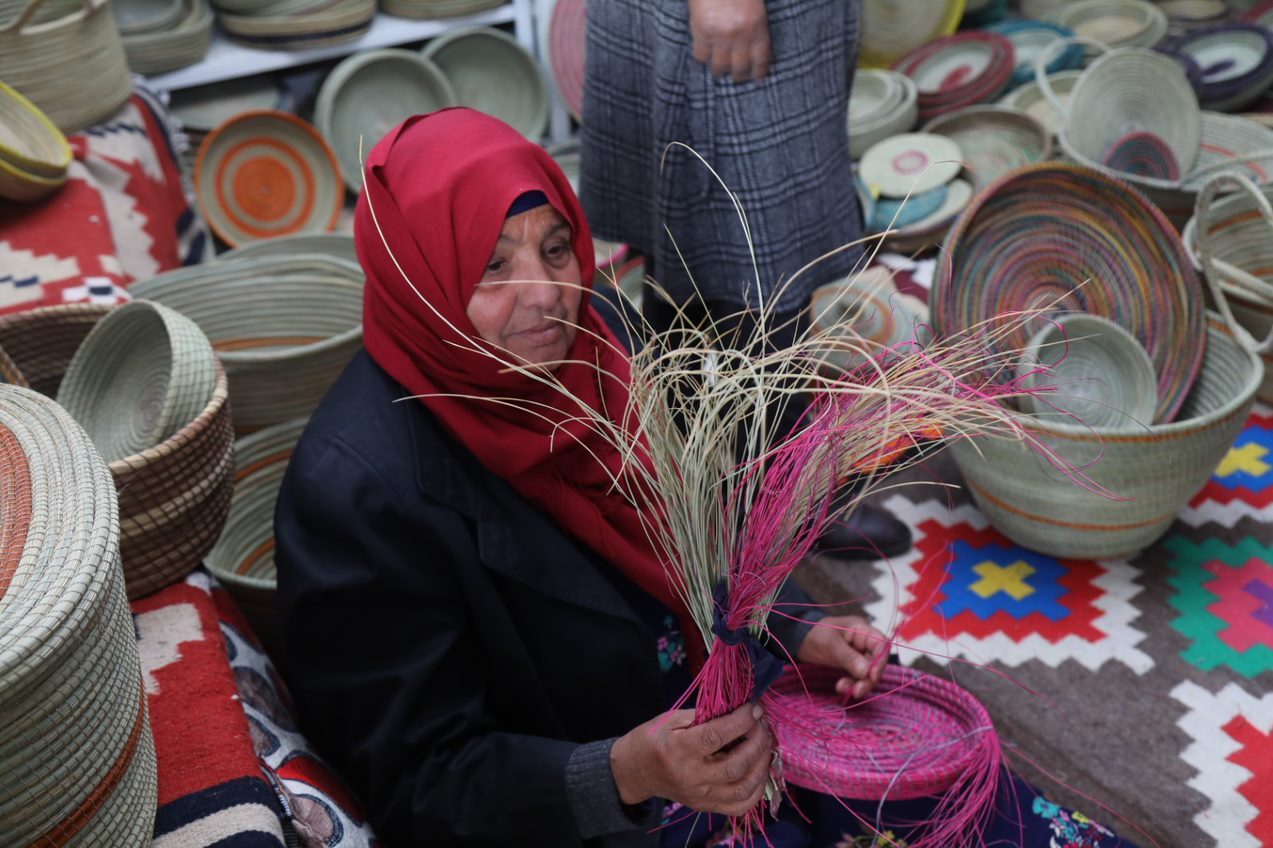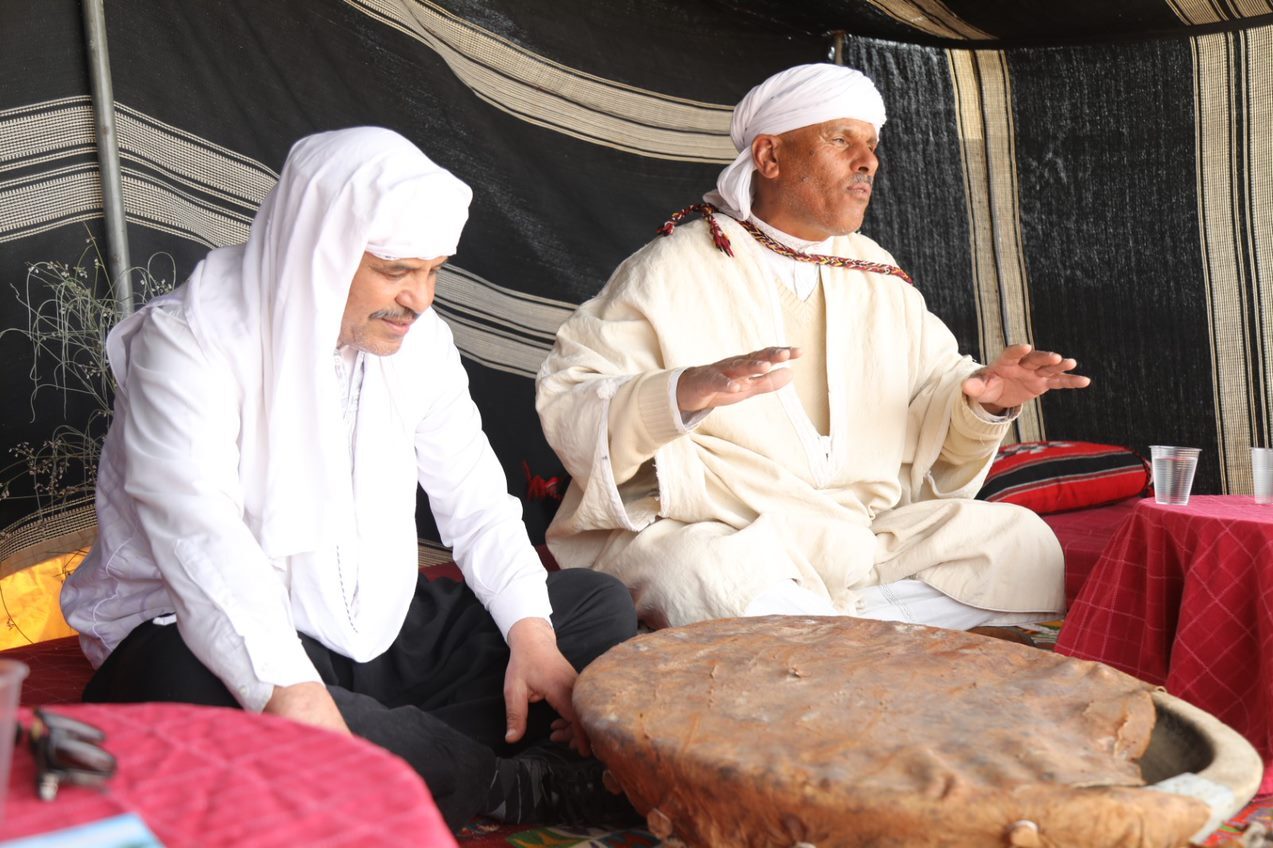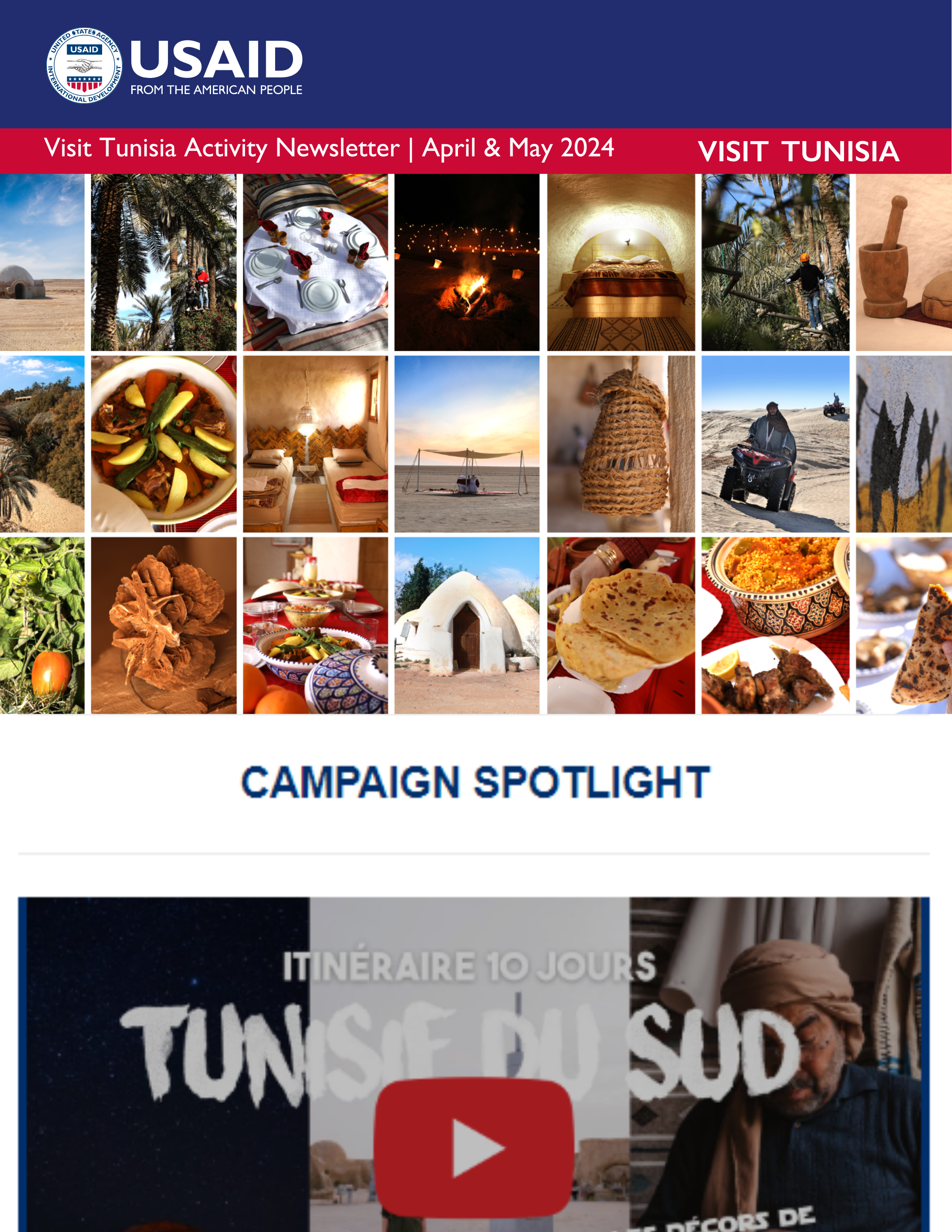At the crossroads of Africa, the Middle East, and Europe, Tunisia has thousands of well-preserved archaeological and cultural sites that are a testament to its rich heritage and history. Each year, tourists from around the world are excited to visit these UNESCO-recognized centers – such as the Amphitheater of El Jem, the Carthage ruins, and the holy Islamic city of Kairouan.
However, Tunisia’s vibrant intangible cultural heritage (ICH) — gastronomy, craft, music, dance, and storytelling -- is underdeveloped, and, in some cases, entirely missing from the tourist experience.
 A Tunisian woman shapes traditional decorative baskets made of Halfa, a strong grass fiber found in the Mediterranean region.
A Tunisian woman shapes traditional decorative baskets made of Halfa, a strong grass fiber found in the Mediterranean region.
To bring these invaluable assets to the forefront of Tunisian tourism -- and empower the culture-bearers that faithfully preserve them -- USAID Visit Tunisia Activity is introducing Tunisia’s Living Culture , an initiative to identify, develop, and market Tunisia’s undiscovered ICH.
To set this initiative in motion, USAID Visit Tunisia Activity, in collaboration with the Smithsonian Center for Folklife and Cultural Heritage , Tunisia’s Heritage Enhancement and Cultural Promotion Agency (AMVPPC), and Tunisia’s National Heritage Institute (INP), is hosting an academic symposium featuring Tunisia's ICH assets in underserved regions.

The symposium, to be held in Gabes from September 10-12, will feature at least 30 prominent ICH researchers presenting on themes such as oral traditions, performing arts, social practices/ rituals, and traditional craftsmanship.
Researchers focused on the regions of Tabarka-Ain Drahem, Kairouan, Gabes, Tozeur, Kebili-Douz, or Tataouine are invited to submit their contributions by August 22.
The presentations’ themes will help USAID Visit Tunisia Activity identify distinctive living cultural traditions to support in underserved regions. The project will then provide tailored training and marketing support to local artisans and other culture-bearers preserving these traditions, helping them better shape and promote their tourism products to a broad audience. In addition, the project will provide up to 30 of these tourism enterprises with small grants to further enhance their products and experiences.
Finally, USAID Visit Tunisia Activity will feature these compelling tourism experiences in its domestic and international marketing campaigns, introducing visitors to a new side of Tunisian culture and bringing critical jobs and revenue to underserved regions.
Halle Butvin, Smithsonian’s director of special projects who will lead training workshops for local scholars and tradition bearers, has high expectations for the program -- not only will it enrich Tunisia's tourism ecosystem, she says, but it will empower the often-overlooked communities that keep its diverse traditions alive.
“Tunisia Living Culture will support tradition bearers and their communities to create tourism experiences, where they can share cultural practices with visitors and directly benefit from tourism revenues,” says Butvin.




